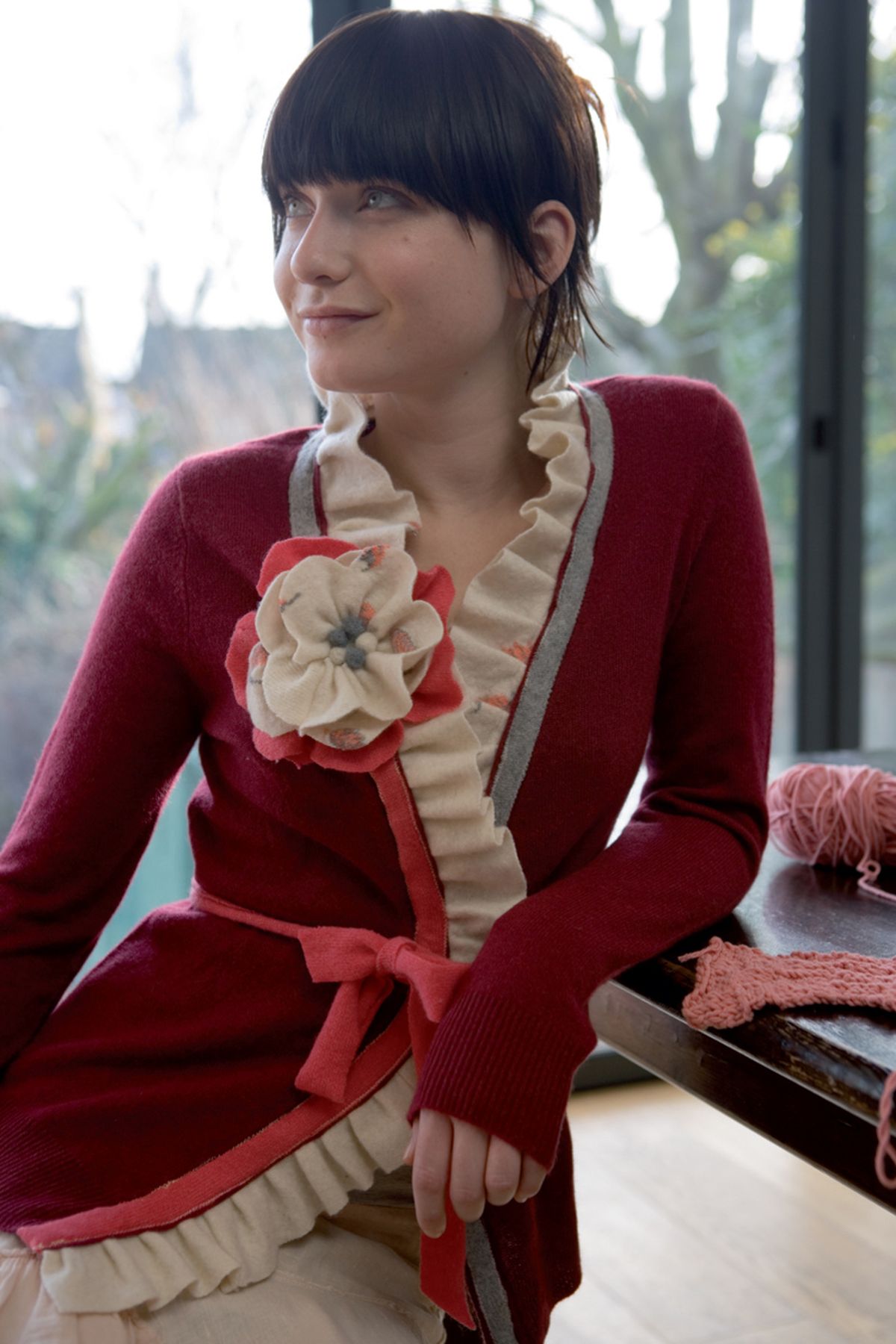Back to cool
Secondhand clothes can be hip again – with a little creativity

Like most of us, Deena Moe-Caruso recycles paper and plastic in her curbside bin once a week. But on every other day, she also recycles fashion trends.
At Finder’s Keepers Fashion Flashback, one of three retail shops she owns in downtown Spokane, Moe-Caruso sells top-quality vintage clothing, giving new life to clothes and accessories that might otherwise be headed for the landfill.
She says shopping secondhand can be an affordable, green way to stay on top of the latest Hollywood trends.
“A lot of movie stars are doing the flapper and ’40s-era glamour,” Moe-Caruso says. “You can … raise the hem or remove a sleeve or drop a neckline and create a look that’s so totally now.”
With a few alterations and sometimes a bit of adornment, even the most ordinary-looking clothes can look hip, says Kayte Terry, the Brooklyn-based author of “Complete Embellishing: Techniques and Projects” (Home Arts, 176 pages, $24.95).
Her book offers instructions for adding flair to everyday items, such as sewing a ruffle lining into the placket, or center opening, of a cardigan sweater and replacing the straps of a tank top with layers of antique doilies.
“I love taking something ordinary and making it really cool,” says Terry, 32, who used to embellish her clothes when she was in high school. She once covered a pair of pants with silk flowers.
“They weren’t the most practical of pants,” she says, laughing.
Back then, she explains, “the creativity came first and then the practical stuff came later. At this point I’ve learned what works and what doesn’t.”
One of Terry’s favorite techniques is to appliqué fabric pieces onto garments. Even non-sewers can do this using a permanent, washable fusible-webbing product, she says. Simply adhere the webbing to a piece of fabric with a warm iron, cut out the desired shape, peel off the backing paper and iron it to the garment.
She also likes making felt flowers, ruffles and other embellishments to sew onto sweaters or turn into pins. Terry buys wool sweaters from thrift stores, washes them in hot water, dries them in a machine dryer, then cuts the desired shapes out of the matted material that the felting process creates.
“If you have a sweater that you really like that has a hole in it, just make a wool appliqué” to cover it, she says.
Terry, who is working on a second book all about appliqué, got her start at an Anthropologie store, where she would create that retailer’s distinctive merchandise displays. That led to a gig for the now-defunct Adorn magazine, where she was a prop stylist.
In truth, though, her roots in crafting began in childhood, when she would set up craft stands (rather than lemonade stands) outside her home in Connecticut.
Terry writes a craft blog at www.thisisloveforever.com.
Moe-Caruso, of Finder’s Keepers, says she first got into the secondhand business because of the thrill of finding a treasure for $2 that she could sell for $100.
Her other two shops include Finder’s Keepers Jewelry Galore, adjacent to Fashion Flashback on Cedar Street, and Finder’s Keepers II, which carries vintage-inspired new apparel on Main Street.
She loves helping people personalize their style, including professional women who want to stand out in the workplace but don’t want to pay top dollar in conventional retail stores. (Moe-Caruso says she has seen belts for $300 in magazines that look like used ones she has carried for $12.)
She says her shops also are an occasional stomping ground for Hollywood stylists, who have found her via the Internet and through her brother, who is a stage producer for fashion runway shows in New York City.
The stylists fly to Spokane, spend up to $3,000 in her stores, and then bring the goods to their clients.
The latest trend she’s seeing is a rise in the number of men interested in secondhand products.
“Men’s vintage clothing turns over very fast,” Moe-Caruso says. They like “great old wool jackets with a Western flair, old vintage cowboy boots, suede jackets from ’60s and ’70s … and vintage Lacoste (brand clothing).”
After all, she says, everything old tends to be new again at some point – even the jumpsuits she used to wear in the 1980s.
“Designers design, but they always use vintage inspiration,” Moe-Caruso says. “We’d be wearing spacesuits if that weren’t the case.”
Megan Cooley can be reached